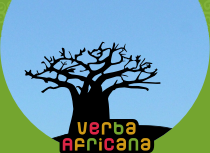Structural Aspects of the Tales
The longer stories have a structure of three parts: the introduction – the main story – and the coda.
The defining part of all the stories is what constitutes the middle section in our version, but an introduction and coda can be added. The three sections, especially the central one, can be divided into even smaller parts. For example, the introduction of the Geesoó Duqang story recounts a married man herding his cattle happily, while a special calf is sucking his cows. This first segment finishes when the cannibals enter the stage. They try to kill Geesoó Duqang three times in the same setting. When he finally has to flee, the last part of the central section begins. We follow the escape route of Geesoó Duqang until the danger is over.
The most conspicuous instruments of structure are the ladder, the repetition and the parallelism. The ladder is a series of similar events leading to a new situation. In many tales, such series of related events amount to three; however, sometimes there are four levels and sometimes only two. An example of the usual three event patterned ladder is the three times in which the cannibals try to kill Geesoó Duqang. First, a poisonous snake is placed above the door, after this comes the poisoned beer, and a peak in the story is reached when the both deceiving and dangerous trick is used to avert the murder of Geesoó Duqang: the swapping of sides where Geesoó Duqang and his wife, the daughter of the cannibals, sleep. The events concerning the poisonous snake and beer can be told in any order, but the last event must always be the changing of places.
In all parts of the tale we encounter repetitions. We hear the cannibals discussing how to kill Geesoó Duqang. Next the calf reports it to his master in the very same words. Or the calf foretells what will happen and how Geesoó Duqang should behave, upon which we are told the same information when it actually takes place.
We see parallelism in the fixed sequence of elements including the wording of the following element: as the cannibals make their plans when Geesoó Duqang is out herding, the calf runs towards him, calls for him, and Geesoó Duqang says “Aha.” The calf tells him the plan, to which he complains “Oh, I will die,” and the calf says “No you won’t,” and so forth.

